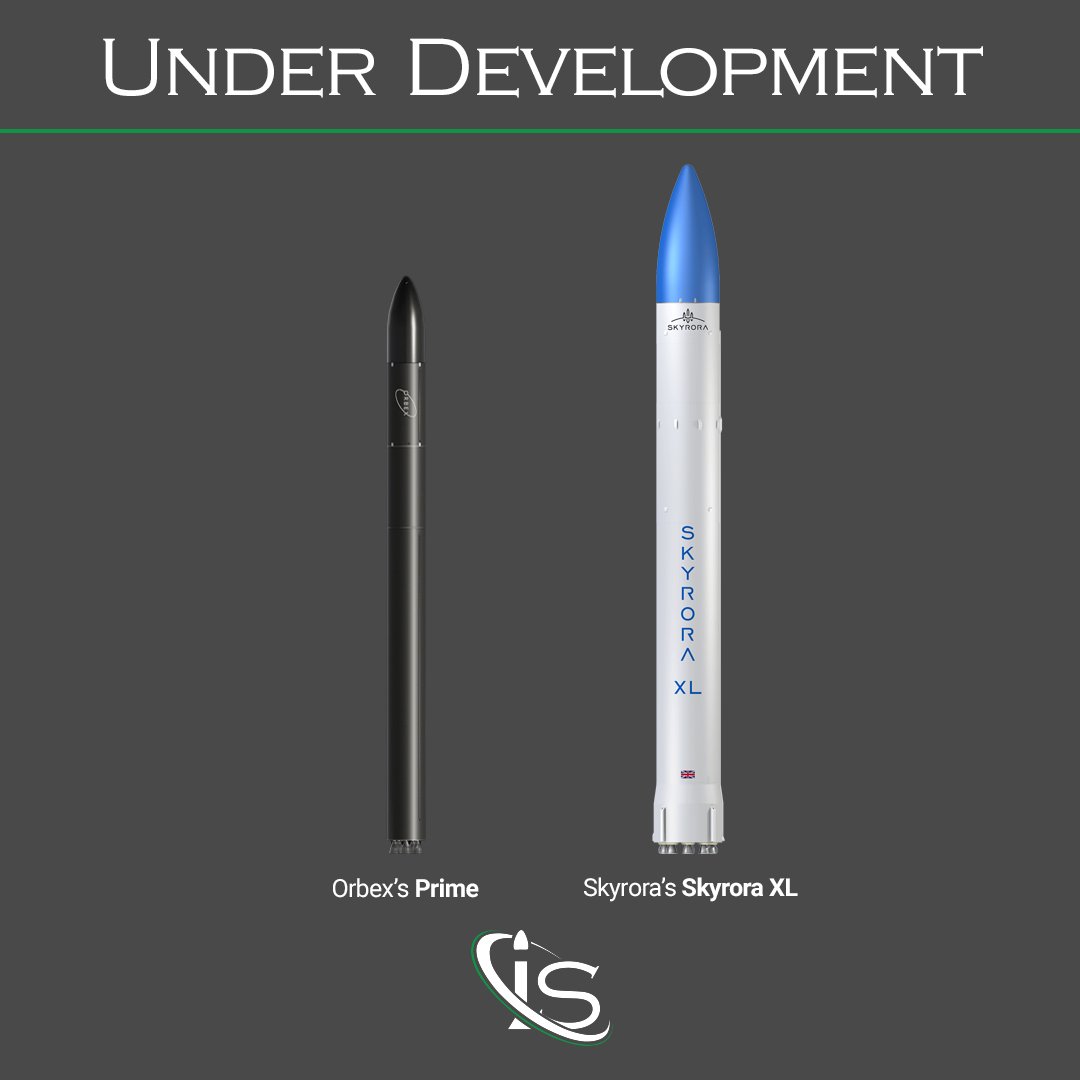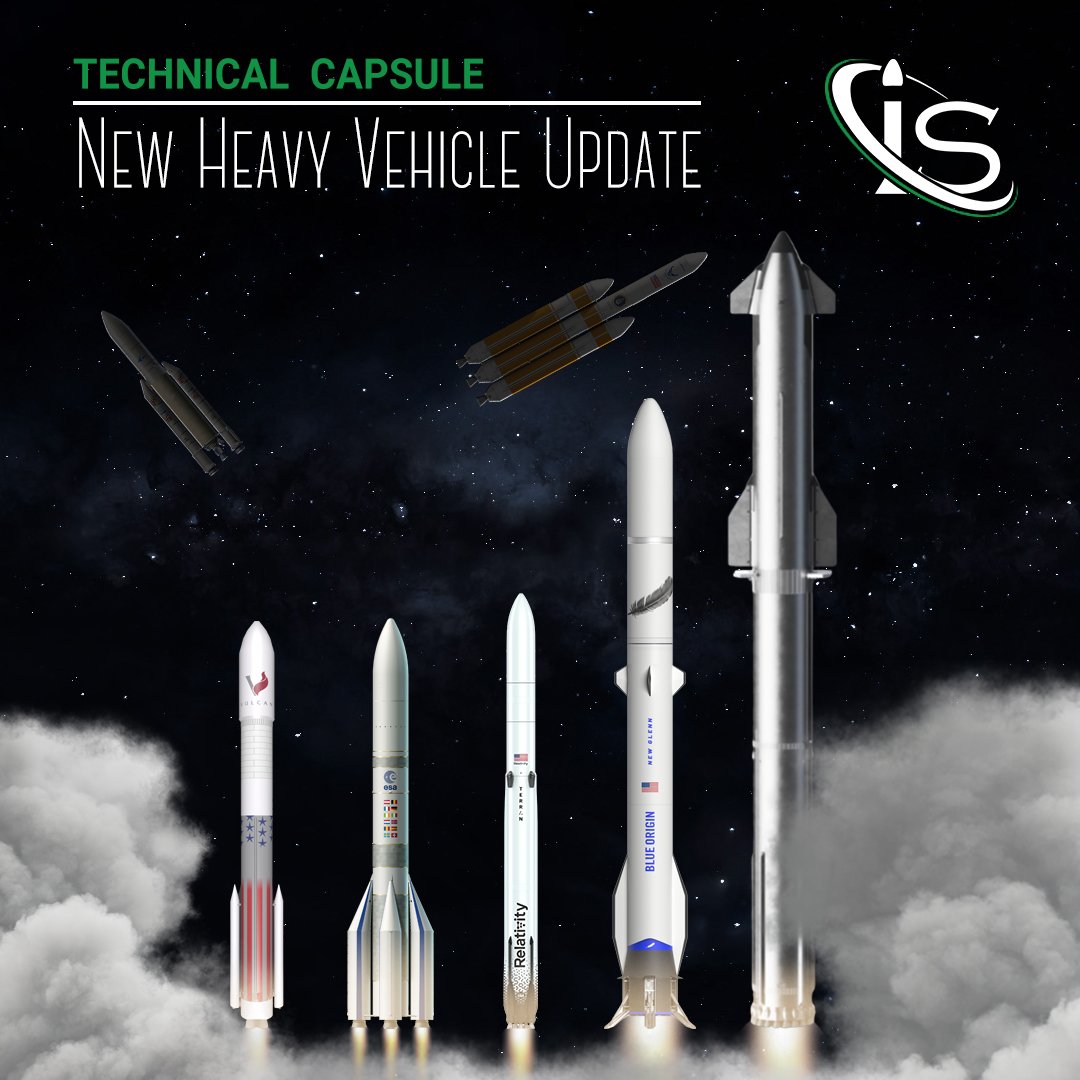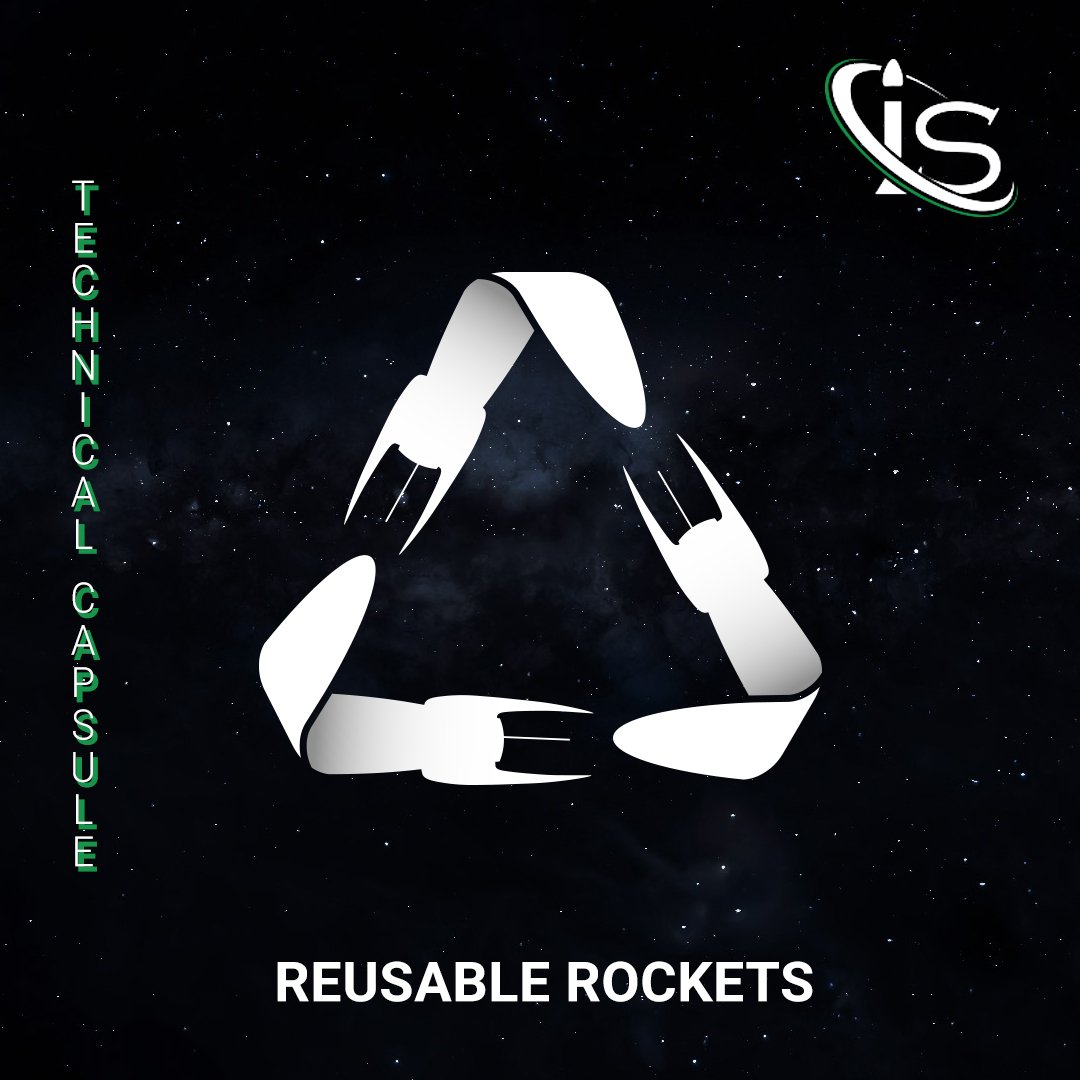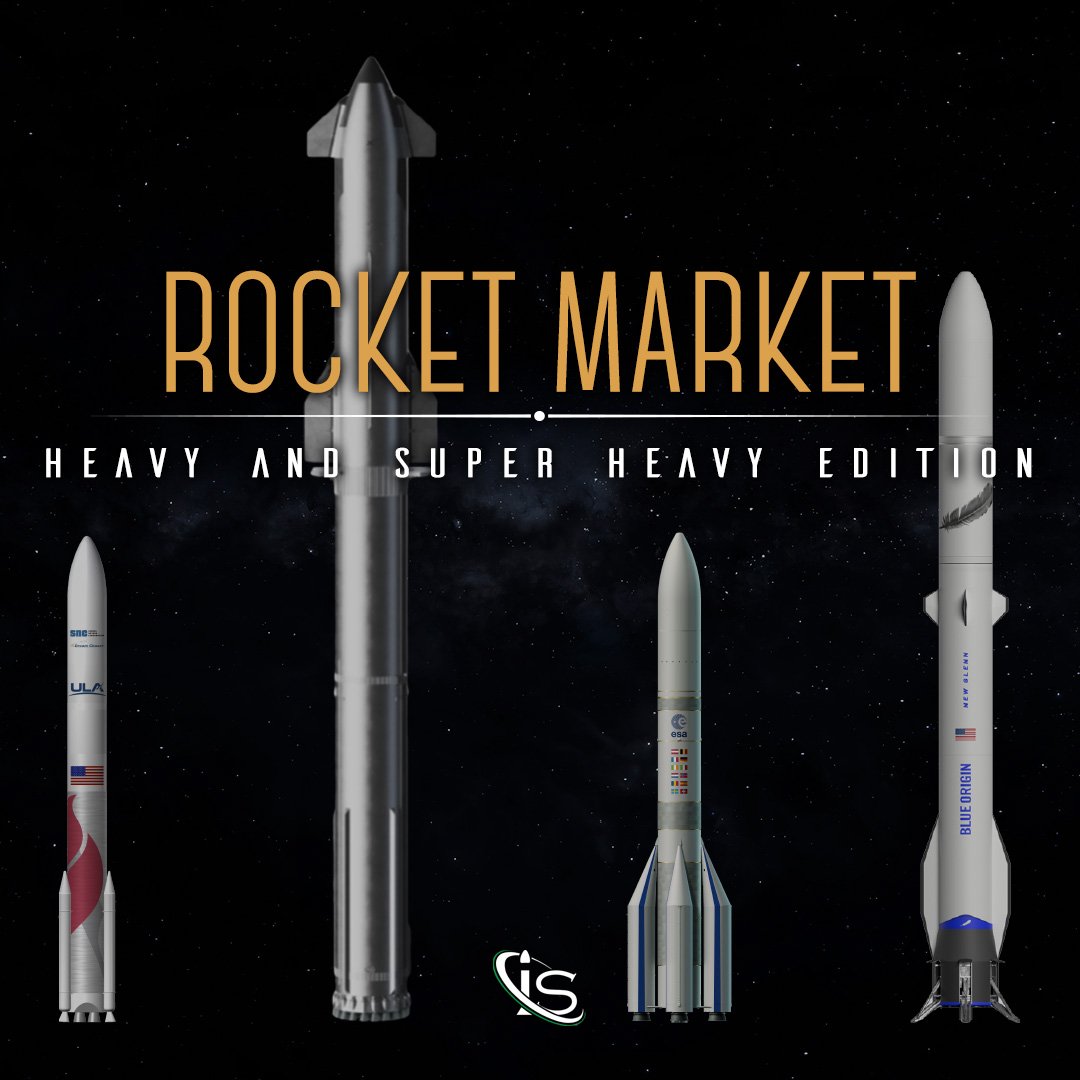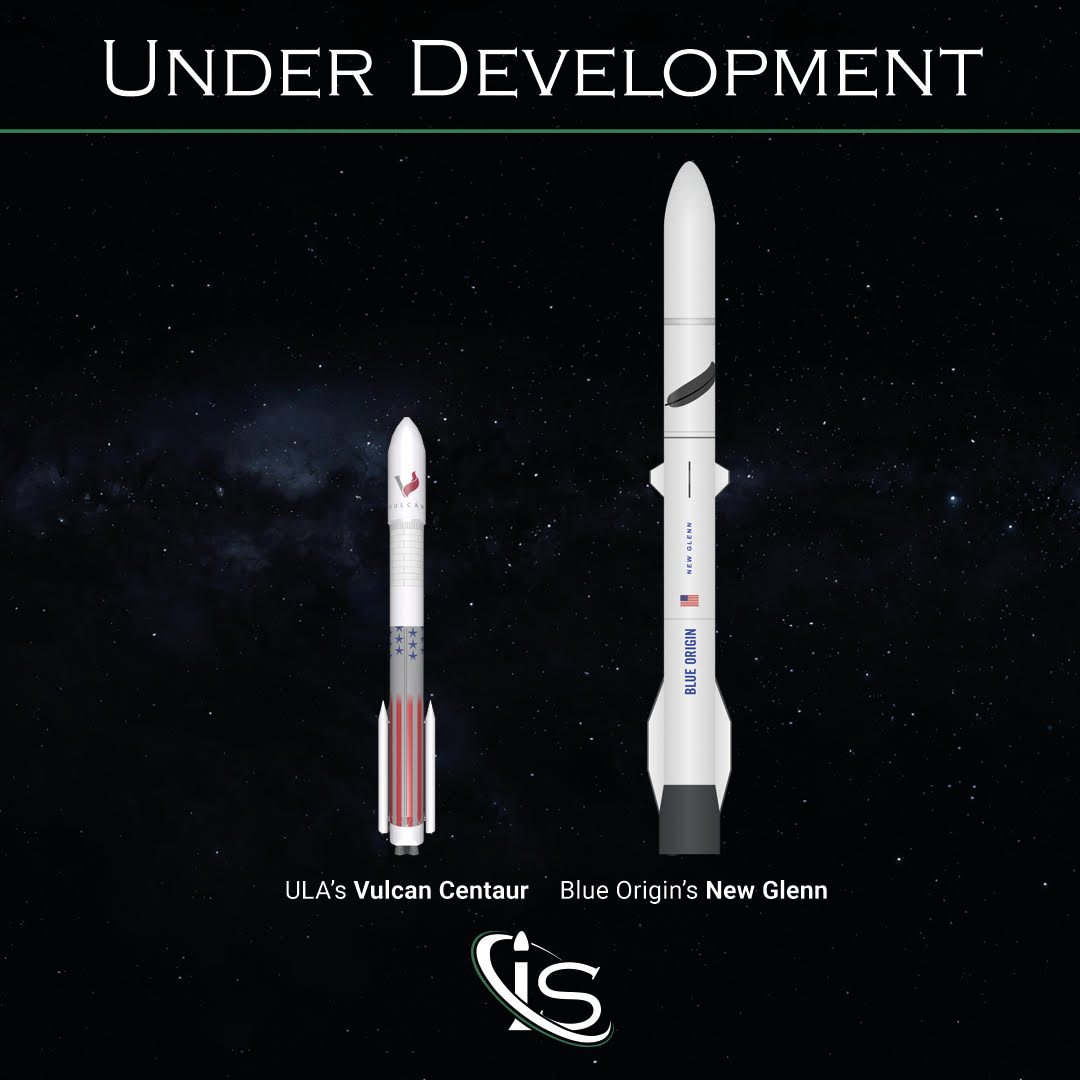Here we are with a new column! The goal of this column is to present launch vehicles under development that are aiming to achieve a leading role in the space industry.
Terran-1, RS1 and Alpha
In this first blog, the main characters will be three two-stage, small-lift launch vehicles, which have the maiden flight scheduled before the end of Q3 2022. Another common characteristic they have is the nation of origin: the USA. The three launchers, more fully described below, are Relativity’s Terran 1, ABL space systems’ RS1 and Firefly’s Alpha. The rockets’ order of presentation follows chronologically the scheduled maiden flights.
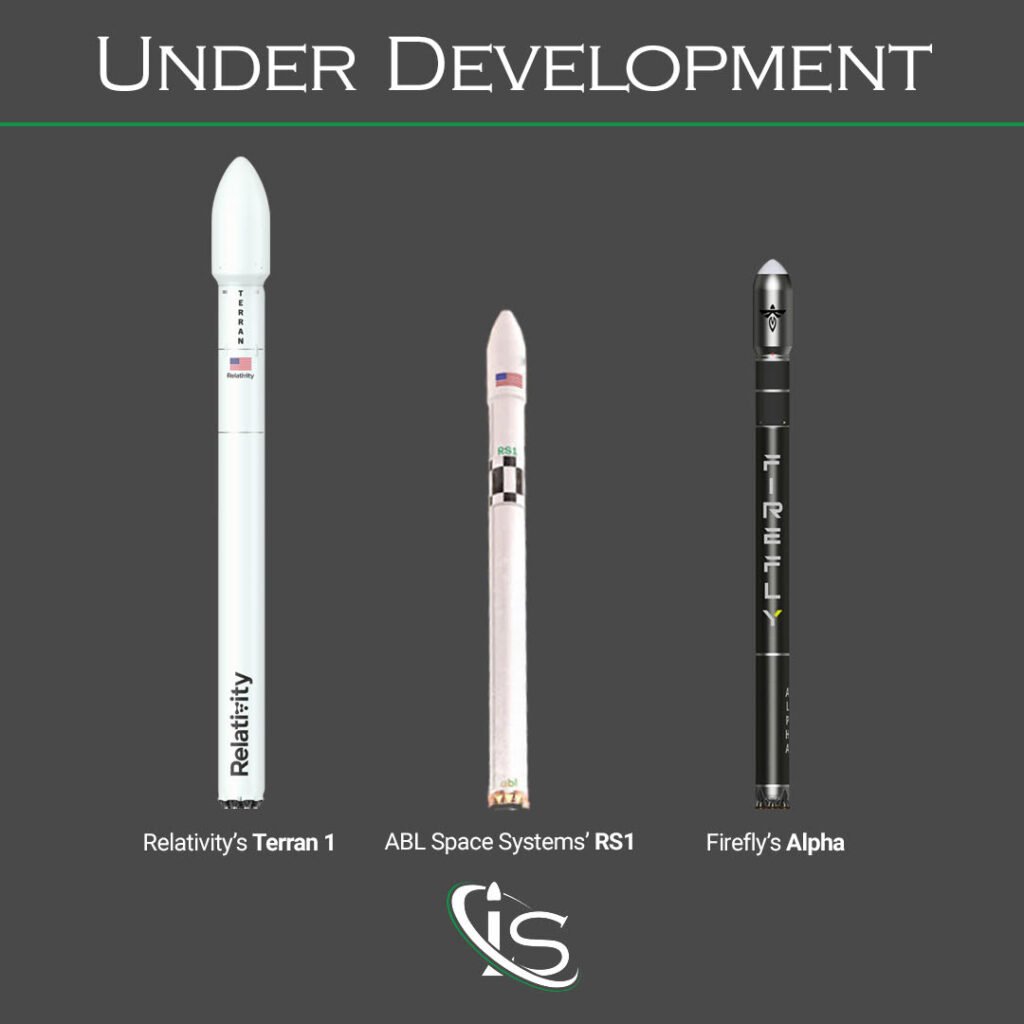
Relativity’s Terran 1
Terran 1 is a rocket designed, printed and flown by Relativity Space in California; the word “printed” is not a random choice, since Terran 1 is the first rocket entirely built with 3D printing. This innovation in the space industry allows Relativity to create rockets with fewer parts, which leads to two great advantages: the increase of reliability and the acceleration of the production rate. Relativity guarantees a production time, from raw material to flight, of less than 60 days. In addition, the 3D printing, the artificial intelligence, and the autonomous robotics also have as advantages a simplified supply chain, less touch points, and less human errors. The primary and secondary structures of Terran 1 are realized with Stargate, the world’s largest 3D metal printer, using aluminum alloy.
Relativity’s innovations also include the propulsive sector, introducing a new propellant, which they define the “propellant of the future”, composed by Liquid Natural Gas.
The first Terran mission to fly is the #GLHF, acronym for #GoodLuckHaveFun. The rocket is currently undergoing testing for its first launch in September at Cape Canaveral. Relativity will have two launch complexes available for launching: the self-constructed facility on site Launch Complex 16 at Cape Canaveral Air Force Station, in Florida, and the under development Site B330 at Vandenberg Air Force Base, in California. From the first launch complex they can launch to low-, mid-inclination orbits and from the second to high-inclination orbits.
All the rockets’ numerical specifications are resumed in the tables below to compare the three launchers together.
Check here to see the launch schedule of Terran 1.
ABL Space Systems’ RS1
RS1 is a rocket designed and built by ABL Space Systems in California. Together with the launch vehicle, ABL produces even its own launch mobile complex, the Ground System GS0. This deployable system turns any cement platform into a launch site. The GS0 guarantees a rocket being ready in less time, satisfying a tight schedule, with a smaller team, and with a smaller footprint.
The RS1 has been designed to support transportation and handling operations: all its assemblies can be packaged into standard shipping containers. So the rocket and the launch system can be built in one country and then shipped by sea to another one.
RS1’s Maiden Flight
On July 9th, ABL carried out the static-fire test for stage 1, concluding the tests on the stand-alone stages; together with this test, they also verified the performance of the ground system. Now, after the mating between the stages, they are conducting the last tests before the first flight at Pacific Spaceport Center, located at Kodiak Island in Alaska. The launch site is not a bind for ABL since, using the GS0, they can adapt every concrete pad to a launch complex. In fact, ABL already has contracts with Cape Canaveral Air Force Station in Florida, Vandenberg Space Force Base in California, Pacific Spaceport Center in Alaska, and SaxaVord Spaceport in Scotland, UK. In the last site, they have in schedule 58 RS1’s launches with Lockheed Martin. Another contract with a huge company envolves the deployment of two prototype satellites for Amazon’s Project Kuiper at the end of 2022.
The choice of using multiple launch sites gives ABL the possibility of a wider range of orbit, meeting the needs of costumers. They aim to put smallsats not only in low earth orbit, but also in medium earth orbit and even in geostationary orbit.
Check here to see the launch schedule of ABL’s RS1.
Firefly’s Alpha
Alpha is a rocket designed and produced by Firefly Aerospace, based in Texas. The rocket is designed to offer low-cost launch capability for small satellite customers, at a price of $15M for dedicated launch services. Alpha is realized with carbon composite materials, in order to have strong and lightweight primary structures. The oxidizer and the fuel used for their Stage 1 Reaver 1 and Stage 2 Lightning 1 engines are LOX/RP-1, short for Liquid Oxygen and Kerosene propellant. The loads and environments are projected to be less than those of other small and medium rockets, limiting the need of additional isolation systems or mitigation techniques for payloads.
Alpha’s Maiden Flight
On Sep 3rd, 2021, Alpha had its maiden launch, which unfortunately failed, exploding because of an engine shut down. They are waiting for their first successful launch with a possible window going from late August to the second week of September. The second Alpha rocket is fully integrated on the pad of Vandenberg, ready for flight, outside of performing some tests within two weeks of launch. Firefly is waiting for a launch license from FAA which pends on the approval of a new debris model for rockets, which was required after the first Alpha exploded in flight. After the approval of FAA, the “2 The Black” mission will have a launch window depending on the launch schedule of Vandenberg.
The company’s production objective is to build rockets to meet a schedule rather than a specific mission. The design objective is one rocket every two or three months. In fact, after the maiden flight, Firefly is contracted for another launch in 2022 and six other launches in 2023.
The launch complexes available for the customers are Vandenberg Space Force Base in California, Cape Canaveral Air Force Station in Florida, and Wallops Flight Facility in Virginia. These three launch sites enable Firefly to have a wide range of orbits: e.g. from Vandenberg they can launch to high-inclination orbit, while from Cape Canaveral to low- and mid-inclination.
Check here to see the launch schedule of Firefly’s Alpha.
Final Comparison
In this last paragraph, we put together the numerical specifications of the rockets in order to compare the three. Not to have a ranking of merit, but to relate the different specifications between rockets that are similar at a glance.
Launcher
The first consideration is that Terran 1 is the biggest, both for height and diameter. The remark on the materials used has already been treated before, but it is interesting to see in the use of material the versatility of a booming industry, such as the space one. The capabilities are very similar, especially between Terran 1 and RS1.
| Terran 1 | RS1 | Alpha | |
| Height | 35 m | 26.82 m | 29.48 m |
| Max Diameter | 2.3 m | 1.83 m | 2.2 m |
| Gross Lift-off Weight | 54,120 kg | ||
| Structure | 3D printed Aluminum alloy | Metallic – Aluminum | Carbon Composite Materials |
| Capability to LEO | 1480 kg (300 km) | 1350 kg (200 km) | 1170 kg (200 km) |
| Capability to SSO, 500 km | 970 kg | 970 kg | 745 kg |
| Maiden Flight | Sep 2022 | 10 Sep 2022 | 11 Sep 2022 |
Stage 1
The first stages of Terran 1 and RS1 have nine engines, just like Falcon 9’s first stage, while Alpha uses only 4 engines. The oxidizer and propellant are the same as those used in many other rockets, liquid oxygen and kerosene propellant, except for Relativity which uses Liquid Natural Gas.
| Stage 1 | Terran 1 | RS1 | Alpha |
| Engine Name | Aeon-1 | E2 Sea Level | Reaver 1 |
| Engine Number | 9 | 9 | 4 |
| Oxidizer / Fuel | LOX / LNG | LOX / RP-1 | LOX / RP-1 |
| Max Thrust (sea-level) | 970 kN | 801 kN | 484 kN |
| Specific Impulse | 296 s |
Stage 2
Both Relativity and ABL designed the same engines for the first and second stage, respectively Aeon and E2, while Firefly sets up with two different engines: x4 Reaver 1 for the first stage and x1 Lightning for the second one.
| Stage 2 | Terran 1 | RS1 | Alpha |
| Engine Name | AeonVac | E2 Vac | Lightning 1 |
| Engine Number | 1 | 1 | 1 |
| Oxidizer / Fuel | LOX / LNG | LOX / RP-1 | LOX / RP-1 |
| Max Thrust (sea-level) | 125,8 kN | 58 kN | 70 kN |
| Specific Impulse | 322 s |
In the second appointment we will present two British rockets: Prime and Skyrora XL!
